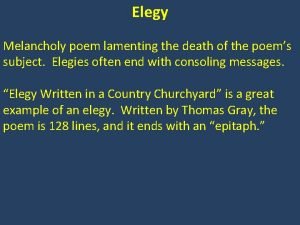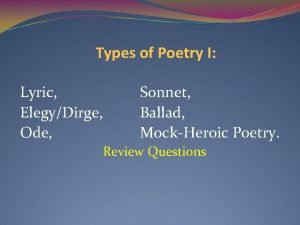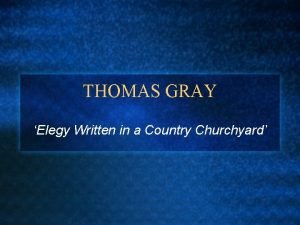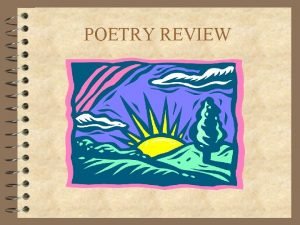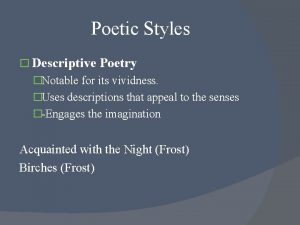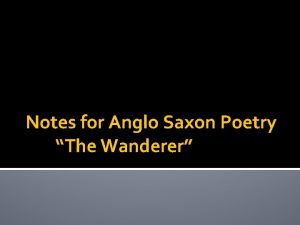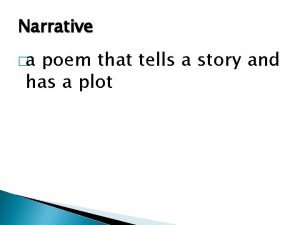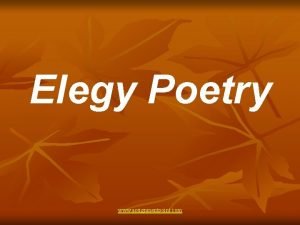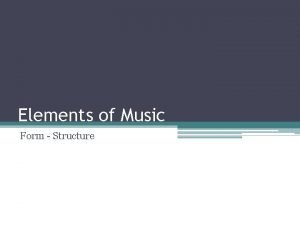ELEGY WHAT IS ELEGY Elegy is a form








- Slides: 8

ELEGY

WHAT IS ELEGY? ◦ Elegy is a form of literature that can be defined as a poem or song written in honor of someone deceased. It typically laments or mourns the death of the individual. ◦ Examples are Alfred Lord Tennyson's In Memoriam (1850), on the death of Arthur Hallam; and W. H. Auden's "In Memory of W. B. Yeats“ (1940).

◦ An elegy is a sad poem, usually written to praise and express sorrow for someone who is dead. Although a speech at a funeral is a eulogy, you might later compose an elegy to someone you have loved and lost to the grave. ◦ The purpose of this kind of poem is to express feelings rather than tell a story. Thomas Gray's “Elegy Written in a Country Churchyard” is a poem that reflects on the lives of common people buried in a church cemetery, and on the nature of human mortality. The noun elegy was borrowed in the 16 th century from Middle French élégie, from Latin elegīa, from Greek elegeia, from elegos "mournful poem or song. "

Thomas Gray’s “Elegy in a Country Churchyard” is a famous English Elegy… Beneath those rugged elms, that yew-tree's shade, Where heaves the turf in many a mould'ring heap, Each in his narrow cell for ever laid, The rude forefathers of the hamlet sleep. ◦

Pastoral Elegy ◦ Elegies written in English frequently take the form of the pastoral elegy. ◦ The pastoral elegy, which represents both the poet and the one he mourns— who is usually also a poet—as shepherds (the Latin word for shepherd is "pastor"). This poetic form was originated by the Sicilian Greek poet Theocritus. ◦ Notable English pastoral elegies are Spenser's "Astrophel, " on the death of Sir Philip Sidney, (1595), Milton's "Lycidas" (1638), Shelley's "Adonais“ (1821), and in the Victorian age, Arnold's "Thyrsis. ◦ Fictional representation of both mourner and subject as shepherds tending their flocks

FEATURES◦ (1) The lyric speaker begins by invoking the muses, and goes on to make frequent reference to other figures from classical mythology ◦ (2) All Nature joins in mourning the shepherd's death ◦ (3) The mourner charges with negligence the nymphs or other guardians of the dead shepherd ◦ (4) There is a procession of appropriate mourners ◦ (5) The poet raises questions about the justice of fate, or else of Providence, and adverts to the corrupt conditions of his own times

◦ (7) There is a closing consolation. the lyric reversal from grief and despair to joy and assurance typically occurs when the elegist suddenly realizes that death in this world is the entry to a higher life. EXAMPLEBut O the heavy change now thou art gone, Now thou art gone, and never must return! Thee, Shepherd, thee the woods and desert caves, With wild thyme and the gadding vine o'ergrown, And all their echoes mourn.

THANKS…
